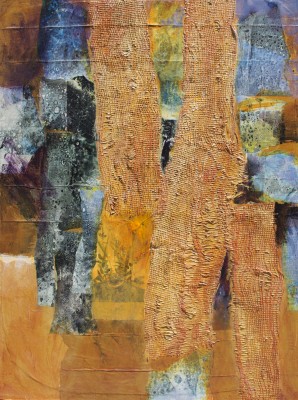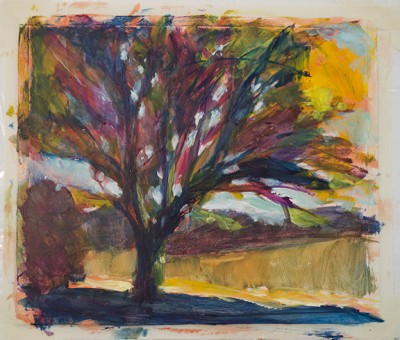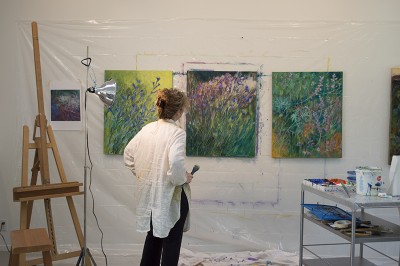If you’ve ever wanted to explore a more abstract way of painting, my next workshop called “Recycle Your Mind” is a fun one. Working with found collage materials in combination with painting, this workshop helps cut you loose to explore more abstract concepts. (Hint: it’s not your mother’s scrapbooking class!)

My fascination with using found materials in my art goes back to kindergarten, when I used moss, rocks and straw to create sculptures in my back yard. I then advanced to using burlap and other fabric scraps from my mother’s sewing basket, incorporating them into large paintings in high school. Today, my pack-rat mind scrounges for anything that is interesting in color, shape and texture (or anything that can be manipulated into something else).
The photo above is a close up of one of my paintings that uses cheesecloth, magazine scrap, Chinese gold leafed paper and block prints from my collection of wood type. My motto? You never know how or when you can reuse something, so save it! (The one quality Robert has trouble with about me, especially when our storage areas become stuffed with “potential art projects”.)
Sustainable art? Recycled art? Reclaimed art? All very hip right now, and part of my life for over 50 years. My response? Of course!
Workshop details: Saturday, April 6, 10:00 a.m. to 3:00 p.m., downtown Nevada City. $115, students to supply their own collage materials and paints. For materials list or to reserve a spot, go to https://leeannbrookfineart.com/contact/.




